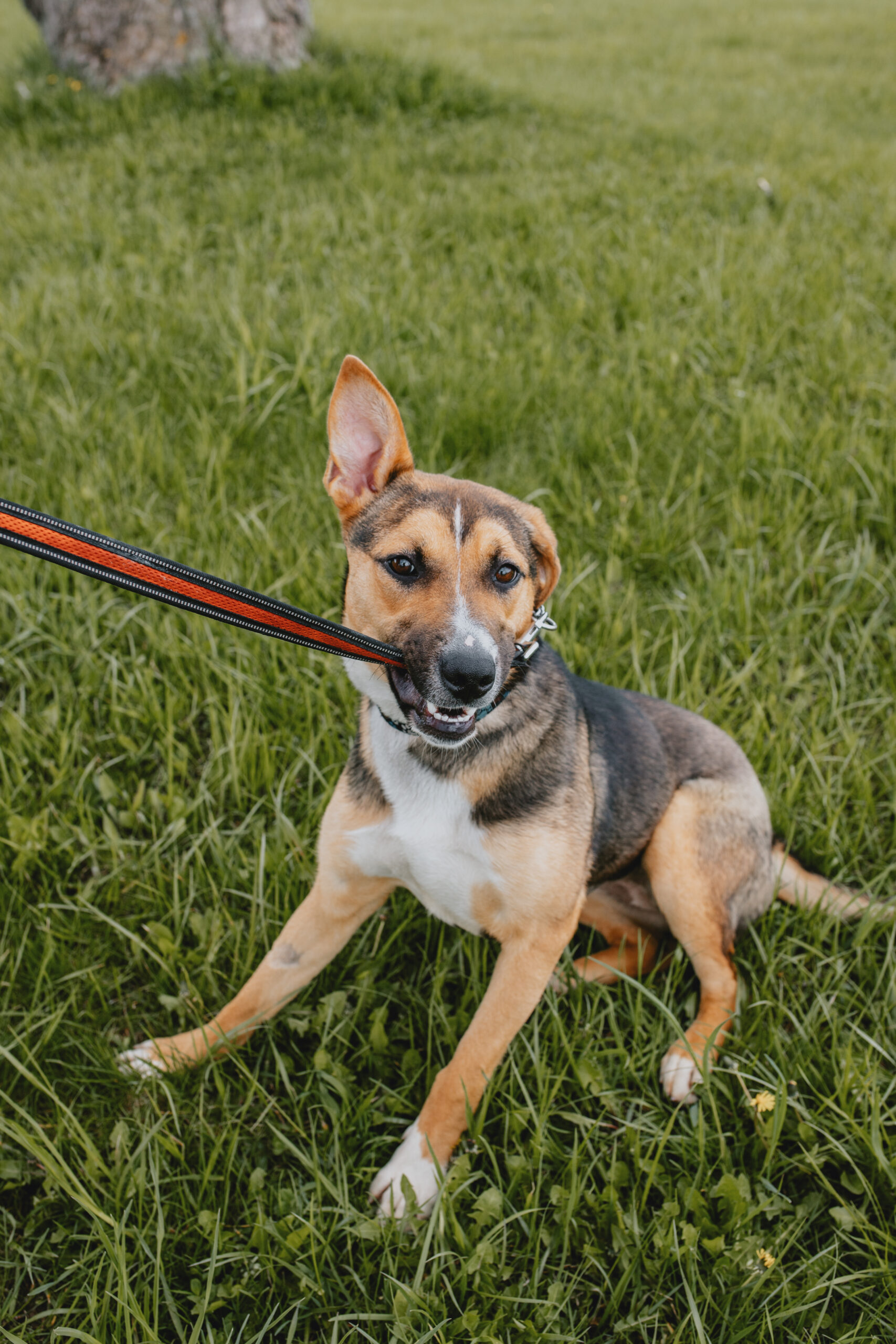5 common canine behaviours and how to modify them
by Ontario SPCA and Humane Society | Dog Care | October 30, 2023

You may think at times, “my dog knows better,” but the truth is, unless you’ve taught them and they’ve practiced the training in an environment or circumstance you’re attempting to work in, they don’t know! Today we’re sharing positive training techniques to modify five common canine behaviours.
Important note: Your dog’s behaviour is trying to communicate something and it’s important to take the time to learn what that is. From there, focus on teaching what behaviours you’d like to see, rather than punishing behaviours you don’t want.
Jumping up
If your dog is jumping up and you push them off, or say “off,” or “down,” your dog will perceive
this as attention, and therefore, as reward. Because our dogs don’t understand good from bad, it all just means they’re getting attention! You can modify this behaviour by ignoring it and turning your body away, or waiting for them to stop, or have all 4 paws on the floor. Be mindful of your environment when trying this technique as it might not be safe around anyone easily injured or knocked over.
Another way to modify this behaviour is through reinforcement of other behaviours you’d like to see. This could mean asking for a sit, down, or stand cue before your dog begins to jump. Check out this video for training tips on greeting calmly.
Barking
Barking is a common behaviour in dogs, and typically communicates a need. Are they thirsty? Hungry? Have their exercise, enrichment, and elimination needs been met? After answering these questions, consider what else your dog could be communicating.
A few ways you can address this behaviour:
- Teach your dog to bark on cue, and then you can teach another cue, such as “stop” or “enough,” to ask your dogs to stop barking. Note: this technique may encourage more barking at first and won’t be suitable for all dogs.
- Don’t yell at your dog for barking – all you’re doing is barking with them. If the behaviour isn’t a danger to anyone, it’s best to ignore it.
- Practice other behaviours. When your dog barks, wait 3-5 seconds and then call them to you and give them a reward. This way you’re rewarding the behaviour you want to see and not the barking.
Pulling on a leash
Leash training is different for every dog and also depends on your walking goals. Your dog doesn’t always need to be at your heel, especially if you’re going on a walk “for them,” allowing them to sniff and explore.
Some ways to modify this behaviour include:
- Plant your feet when they pull on the leash. When they come back to you, begin walking again. This technique may increase frustration for some dogs.
- Get a longer leash (10 feet) with more space to roam. This makes the walk more comfortable for your dog, and gives you more opportunities to reward them for walking close to you.
- Choose equipment wisely. Find an appropriately fitting Y-harness that allows for a good range of motion.
- Exercise does not equal mental exertion. Doing 15-20 minutes of mental enrichment is just as important as a daily walk. You need to keep your dog enriched physically, and mentally.
Chewing
Chewing is a natural and normal behaviour used by dogs to self-soothe and relieve stress. It should not be punished. When leaving your dog in their confinement space, for example a crate, kennel or puppy-proof room, provide several chew options. If your dog is chewing an inappropriate item, trade up in value with a new item like a favourite treat or toy. That way your dog won’t see the experience as losing a resource but gaining one.
Begging
Dogs are scavengers, so it’s normal for them to wait and search for scraps. If begging is rewarded, this will only increase. The first step is to ignore the behaviour and teach them they won’t receive any reward for it.
This behaviour can be replaced with a “go to place” cue. The end result is the dog goes to a specific place to lay down and stays there while you’re eating. Another option is to offer a long-lasting reward or chew in their confinement space. This is useful when you can’t be hands on working on a behaviour, or if your attention is elsewhere. It also helps create independence.
Helping dogs put their best paw forward
Stay positive and keep practicing behaviours you want to see in your dog! Unfortunately, many dogs end up in shelters due to behaviours that could have been modified with time, patience and positive reinforcement.
The Ontario SPCA calls those dogs VIPs (Very Important Paws). These are animals in our care who may need a little extra help, including all of the dogs in our care at our Provincial Dog Rehabilitation Centre. The program allows our Animal Behaviour Coordinators to set these buddies up for success in our animal centres using evidence-based training and Fear Free® techniques in conjunction with dedicated animal care teams across the province.
To learn more about the Ontario SPCA Provincial Dog Rehabilitation Centre, visit ontariospca.ca/dogrehab
Categories
Testimonial
Dogs only ask for your love and attention
Dogs only ask for your love and attention, nothing else. Thank you for everything you do!
